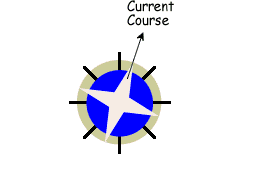Scenarios 
Overview
Use scenarios to refine your view of the future until it is robust enough
to prepare you to deal for range of outcomes that might develop and formulate your strategy.
It is an iterative approach. You update the scenarios periodically always
asking: How will you fit in? What core skills must be improved?
Develop four views of the future and ask smart folks from inside and
outside your organization to assess the view's impact in today's real
world.
You want to understand early. First, you spot the demand (the signal)
and then you understand the drivers, the events in the real world that
will drive you into that business: technology advances, supply of resources, demographic trends.
This prepares your leaders to adapt and is also a superb way to overcome
perception problems and bureaucratic resistance.
To skip ahead, go to the Meetings Chapter
on scenarios.
Why four? What is best practice?
 The scenario approach is very flexible. It can also be use to exam
sensitivity/risk, what ifs, competitors' responses, etc., any time
you want to simulate outcomes and build leaders skills. The scenario approach is very flexible. It can also be use to exam
sensitivity/risk, what ifs, competitors' responses, etc., any time
you want to simulate outcomes and build leaders skills.
When using the scenario approach for formulate strategy, preparing four scenarios is best practice.
Why four scenarios?
Extensive work by Royal Dutch Shell planners in the 1970s and 1980s concluded four scenarios increases the chances of innovation when you begin scenario planning:
- One scenario is just a forecast.
- Two are a decision between two options, do the math.
- Three scenarios compare best and worst case to the middle road. So far, you are not getting people outside their comfort zone.
- Four scenarios do that - it gets you to think away from your baseline.
The art is to identify the four you want to consider. In my experience,
more than four scenarios starts to dilute the focus.
You start with
four, abandon a non-starter as you learn more, and then add another
scenario.
Steps
 1. Start with a focused question - take an educated guess. 1. Start with a focused question - take an educated guess.
Have two or three folks prepare overviews with some rough numbers.
Interview other key players to confirm the scenarios seem reasonable.
2. Use graphics — like consumer needs/demands, business needs/demands,
delivery structure or the macro-environment — to present the
scenarios to the folks who will participate.
3. Off-site, if possible, have the teams discuss the detail and hone
the discussion to identify the likelihood of major change, the signals,
and the drivers that will force you to change your business. This
should be a very well run facilitated meeting, so the participants can think.
Have a framework in place to capture the results and present to
those leaders who have not been through the exercise, but will go
through it.
4. Repeat the process with at least two team exercises before any
major decision will be taken. In the interim, two or three folks
study to validate the drivers and estimate the timing when you must
act.
 Methods Methods |
|
Bottom Up  |
|